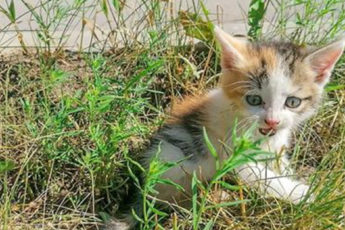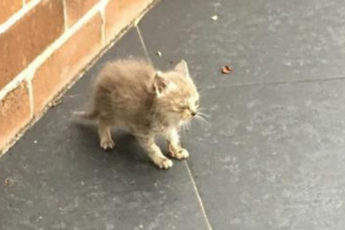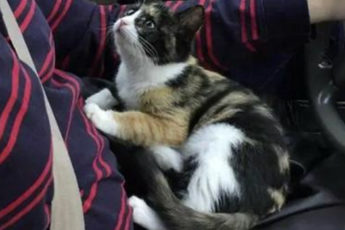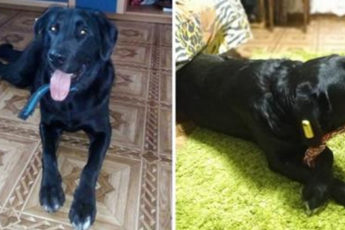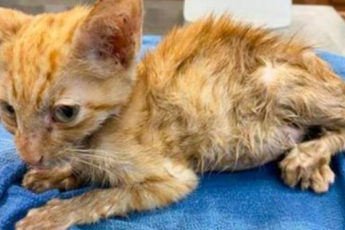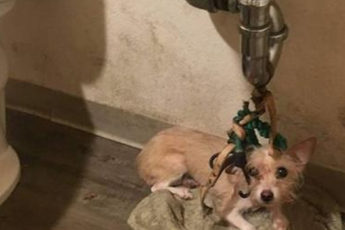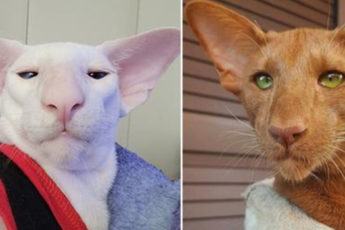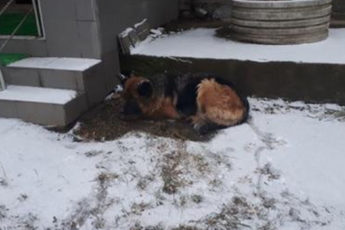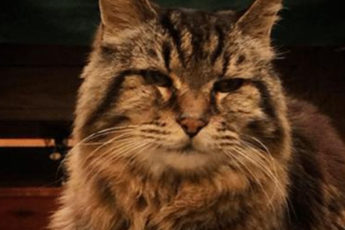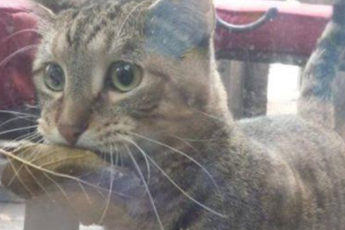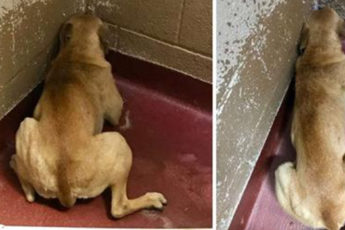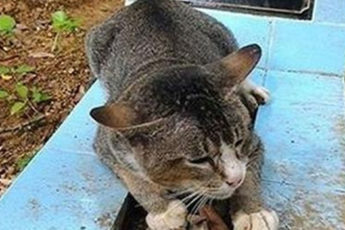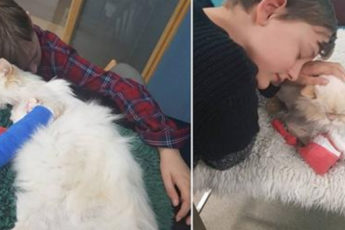Cats’ paws deserve the closest attention and a separate story, so important they are for all aspects of kittens’ lives. They are nice and fluffy, soft and graceful – you just want to stroke them (which is not always to the liking of our pets).
But a cat’s paws are also the most universal and important part of the cat’s body, which helps him to do many different things and increases his chances of survival in the wild.
Did you know that a cat uses its paws for many purposes:
-communicating with humans and other animals
-Checking the environment for danger
-hunting and defense
-care for their fur
-regulating body temperature
-hooking on objects and agile climbing
-cushioning for high jumps or falls
-eating and drinking
-self-soothing
This story provides some interesting facts about cats’ feet, their pads and claws, and how skillfully animals use them.
- A cat normally has five toes on its front paws and four on its hind paws, unless it is multi-fingered (six or more toes)
The multi-finger mutation of cats is called polydactyly (from the Greek “poly” meaning many, and “dactylos” meaning fingers).
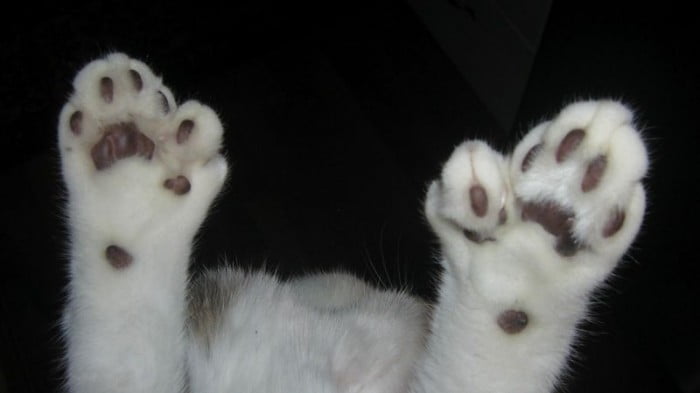
Multifingered cats are also called “Hemingway’s cats” because the famous writer had a large pack of six-toed cats in his house.
Polydactyly is a genetic inheritance, not a defect. These cats perceive it as a positive trait and use the extra toe to increase stability and agility. There is a belief that polydactyl cats bring good luck and happiness into the home. ? Any regular cat has 5 toes on its front paws, 4 of which have pads, and one stand off, has no pad and does not touch the ground. There is another pad on the foot, which is called a carpal pad. A cat has 4 toes each on its hind legs.
- Cats have dominant paws, i.e. they are “right-handed” and “left-handed” just like people.
Various studies on the function of the forelegs of cats have proved that cats have left and right forelegs, and sometimes both forelegs are equally dexterous. More often than not, the cat prefers to use the dominant paw for complex tasks.
A study conducted by the Queens University in Ireland found a link between the dominant paw and the gender of the cat – cats prefer to use their right paw and cats more often use their left paw.
You can check which paw your cat prefers to use by giving it a difficult task – to get a toy or a treat from a hard-to-reach place or to fish a tasty treat out of a bowl of water.
True, scientists insist that it takes at least 75 observations to get a good understanding of which front paw is dominant in your cat. So, this fun task will not be fast. But you can play with your kitty.
3.Cats move so easily and silently, because they walk on the tips of their fingers (on tiptoe).
Many people don’t know that cats walk on their fingertips. They are also called Digitigrades. The reason cats move on their tiptoes is that it gives them a good chance of survival, allowing cats to pick up speed when they need to escape or suddenly attack prey.
The cats’ feet lightly touch the surface, so the cats experience less friction and help them conserve maximum energy. Digitigrade animals like cats are very fast runners. Whenever a cat walks or runs, it retracts its claws into a paw.
When a cat tiptoes silently, it becomes easier to chase its prey without disturbing it.
Even animals such as foxes and dogs also tiptoe, as do cats. So whenever you notice an animal running, be sure to observe the movement of its feet, it gives insight into how the animal moves and says a lot about its ancestors.
- Cats’ paws are very sensitive
Cats have very sensitive paws. This is one of the reasons they often don’t like people touching or playing with their paws.
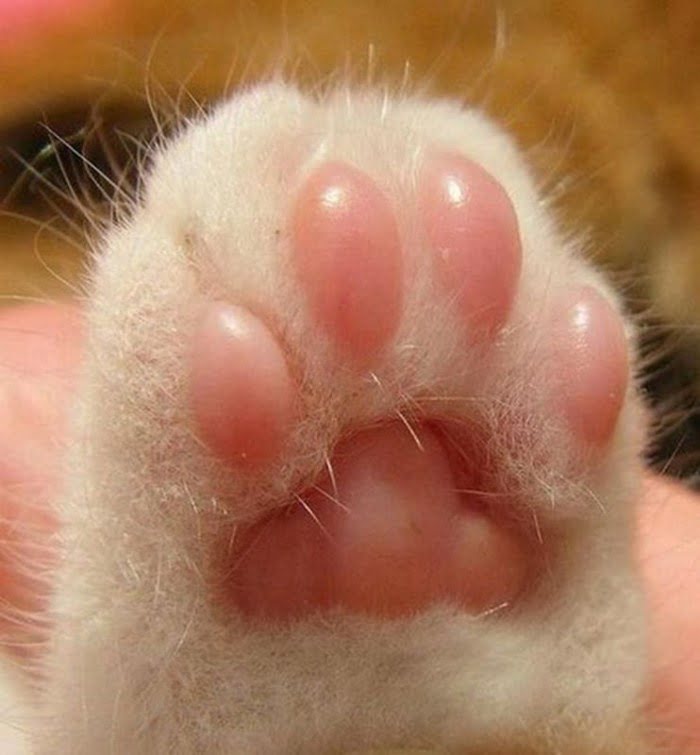
If you try to touch your paws, there is always a chance that your cat will bite or scratch you. They may even run away. Cats’ paws have very delicate sensory organs necessary for hunting and balance. Cats’ paws contain nerve receptors that help in the hunt. Cats can literally sense the world through their paws.
When a cat is in an elevated and calm mood, it often “kneads with its paws,” as in the first months of life, kittens massage their mother’s belly while feeding to get more milk. Those pleasurable sensations remain in the animal’s memory for life, and cats (especially those weaned early from their mother) often “stomp” on their beloved owner or on a soft bed.
Through sensitive sensors on their paws, cats can sense vibrations, pressure and surface textures, which are essential for tracking prey.
Sensitive cat paws can create many problems for cats. Extreme sensitivity in the paws makes life very difficult for our feline friends at times.
The delicate paw pads are sensitive to changes in the environment, which include fluctuations in temperature and pressure. Because paws are not insulated, cats experience a lot of pain and discomfort. Extreme cold, sharp, hot and other surfaces can cause serious damage to a cat’s paws.
There is a reason for the old English saying “like a cat on a hot roof,” which is used when one feels extremely uncomfortable in some company or situation.
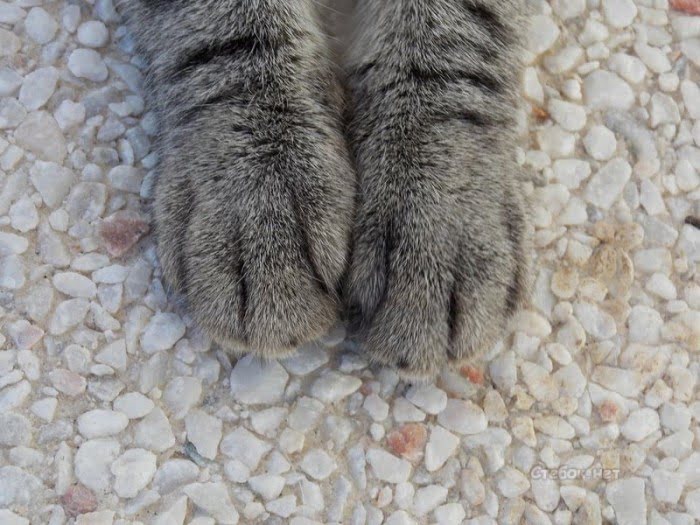
- Cats’ paws are incredibly flexible
The flexibility of their paws allows cats to perform many actions with incredible accuracy and dexterity.
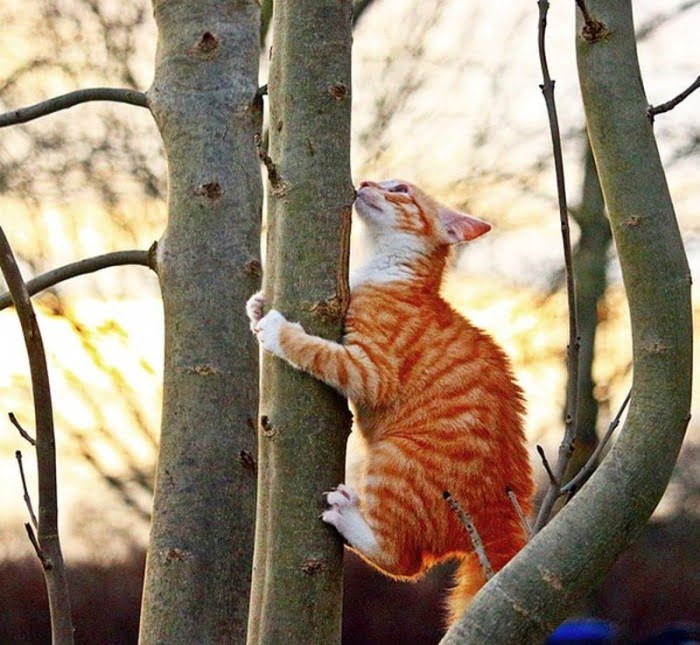
The flexibility of its paws allows cats to climb trees, walk up difficult walls, chase their prey, and hunt. The cat’s front paws can turn inward when required; this allows the cat to get a good grip on a tree with its claws and climb up the trunk without any effort. But cats can go down only backwards, which is extremely uncomfortable and scary for them. This is why cats often get trapped when climbing up a tree and have to call for rescuers.
Flexible paws help cats maintain their stability on thin branches. Only because of this flexibility can cats safely survive in the human world.
A cat’s front paws are weaker than its hind paws. The hind limbs are more muscular, allowing them to push off and leap into the air when they have to.
- Cat paws act as shock absorbers when jumping or falling from heights
Cat paws are also great shock absorbers and cushion landings from heights, especially on rough surfaces. Shock absorbers are handy when moving and hunting. Shock absorbers work when the cat falls from great heights. They also absorb any noise while walking or running, making these animals good and quiet hunters. Cats’ soft and multi-tasking paws make their movement smooth without any sound, so we never hear cats walking, even though they may be near or behind you.
When falling from a height, the paw pads absorb a lot of force as it hits the ground. The cat extends her legs and rolls her back, allowing her to land properly on her feet, and the shock absorber on her paws reduces the impact of the landing. The risk of injury is also greatly reduced when cats fall from great heights.
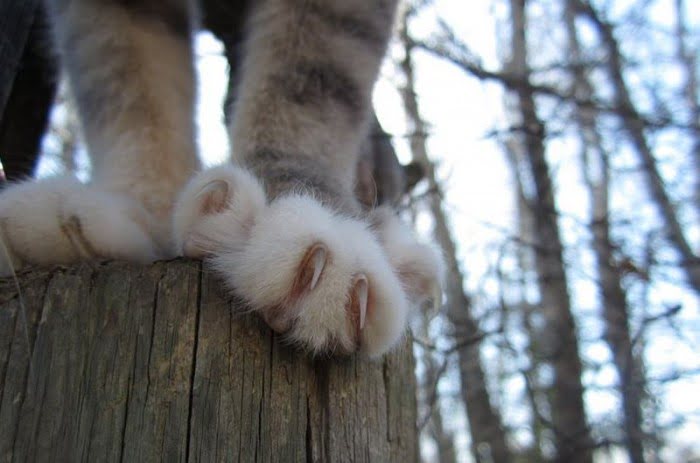
- A cat uses its paws to take care of its fur
Most of the owners notice every day that cats are constantly licking their paws. This is the most common sight if you have a cat at home. Front paws are used by cats as the perfect tool for grooming their fur.
It allows the cat to reach areas of his body where his tongue cannot reach, such as the chin, around the muzzle and behind the ears. Cats wash themselves by first licking their paw and then wiping the area they want to clean with it. The cat pauses to lick and wet its paw again. This process continues until the cat is satisfied with the end result. A cat grooming its paws is a sight that makes you feel that your cat is relaxed and wants to spend some time in peace. Kittens begin the self-care process when they are four weeks old.
- Cats sweat through their paws.
Do cats sweat through their paw pads? Yes, have you ever noticed small wet spots on your floor where your cat has passed, which indicates that cats sweat through their paws.
Feline sweat glands are found only in the paws. Cats’ paws secrete sweat when the animal is hot or frightened. The cat sweats its paws out of fear, and you must have noticed this when you took it to the vet for a checkup.
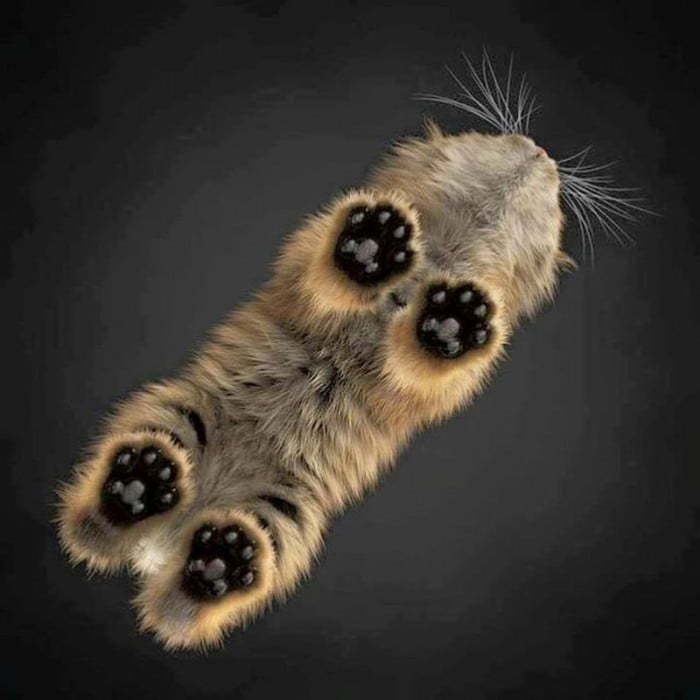
To cool down, a cat resorts to breathing heavily or licking its fur. But unlike dogs, panting in cats is more often related to stress, while dogs pant more because of the heat. Although the cat is a desert animal and adapts well to hot and humid weather, they still need to cool down. Sweat glands on the paws prevent the cat’s body from overheating, especially in hot weather.
- Cats’ paws are used for communication
Cats use their paws extensively to communicate with other animals, their owner or other cats.
Cats leave scratches on objects to mark their territory and broadcast any information. Cats use their paws to communicate when they scratch things or objects around the house. Cats’ paws contain scent glands, and when they scratch any surface, they leave pheromones behind them. The pheromones contain a complete message that other cats or animals sniff out. The scent is present on both their front and back paws. The scent on objects is filled with information about scratching. Cats also scratch areas after they spray them with urine
10.Cats’ paws vary in color
Did you know that the color of the pads on a cat’s paw is related to the color of their pelt? A dark colored cat will have dark or colored paw pads, white colored cats will have paws with light pink pads, and red colored cats have orange paw pads, and tabby colored cats may sometimes have brick or gray paws.
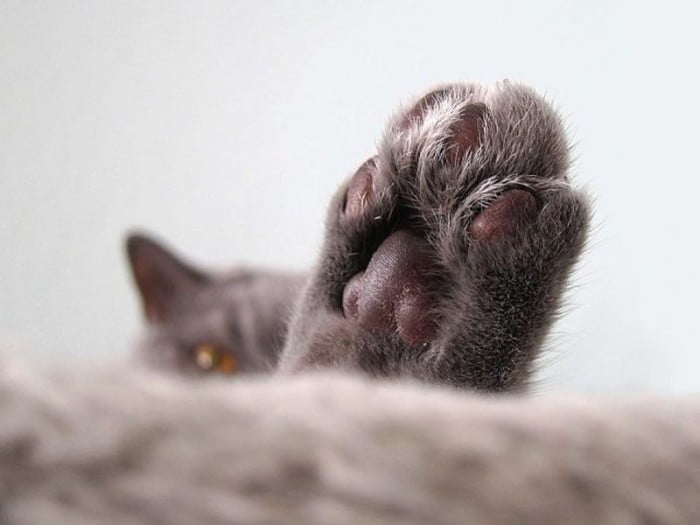
If your cat is colorful, there’s always a chance that your cat’s paw pads will also be colorful.
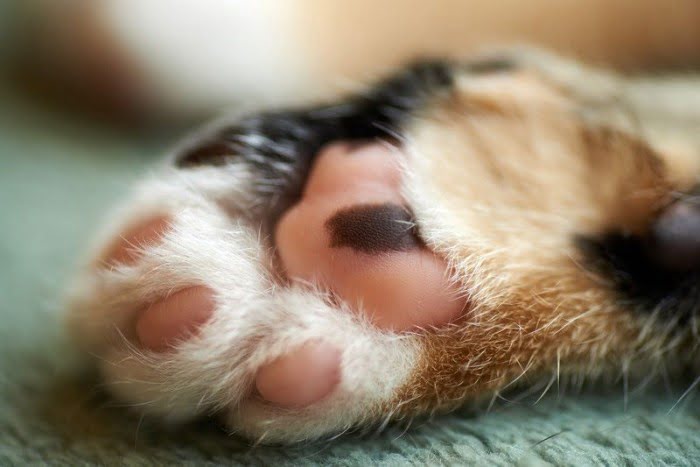
The main reason for this is the pigments that form the color of their fur, it also stains their skin.
- Cats’ paws come in many shapes and sizes
Humans have unique fingerprints, but cats do not have unique pawprints. Cats will have different shapes and sizes for their paws depending on the breed.
Oriental type cats, such as Siamese, have oval shapes and thin feet. Maine Coon cats, on the other hand, have wide and large paws that blend well with the cat’s massive body.
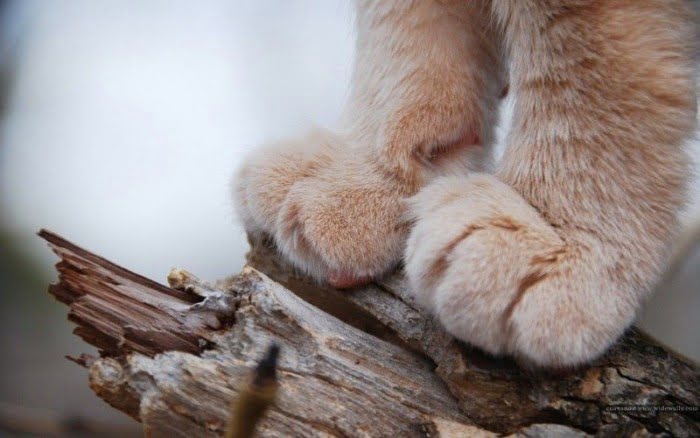
- Cat paws can tell the temperature of cats
Cat paws can report a cat’s body temperature according to a report in Japan. Many cat owners in Japan check whether their cat is healthy or has a fever simply by touching their paws.
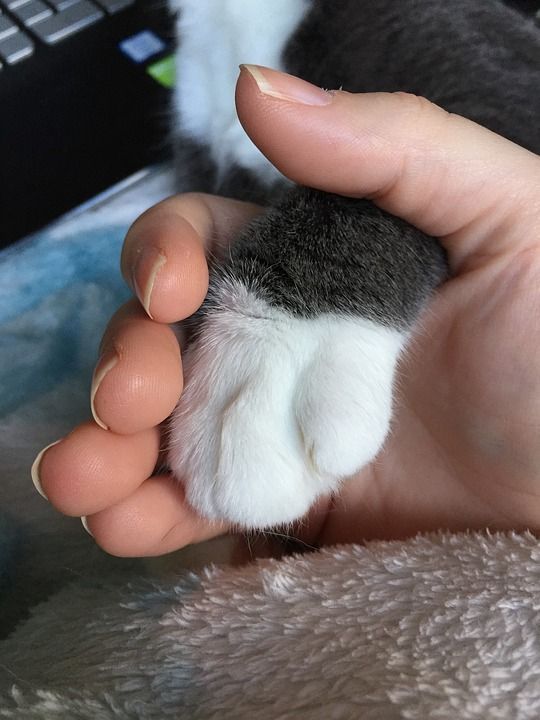
Although cats don’t like people touching their extremely sensitive paws, if your animal trusts you completely, you can train him to “tolerate” your touch to detect illness at an early stage and take the cat to the vet.
It is true that I have learned to detect fever in my cats by gently touching the inner skin on their ears.
- Cat paws hide sharp claws
Claws are part of a cat’s paw.
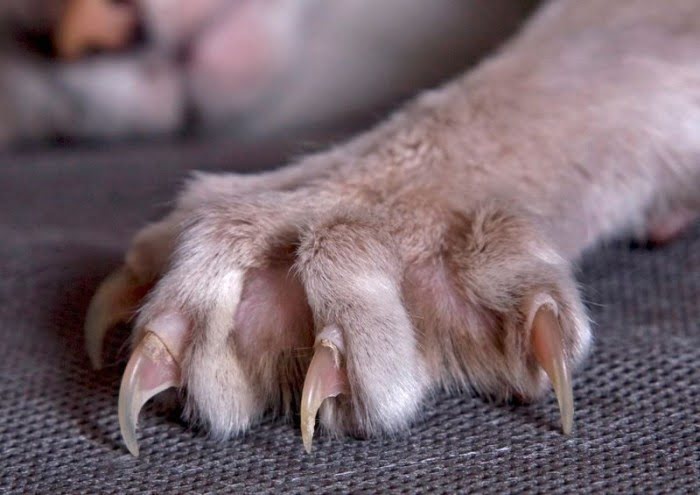
Claws have many unique functions – they allow cats to climb vertical surfaces and up trees, dig in the ground, defend themselves from enemies, grab and even attack their prey.
When at rest, the claws are hidden inside the paw.
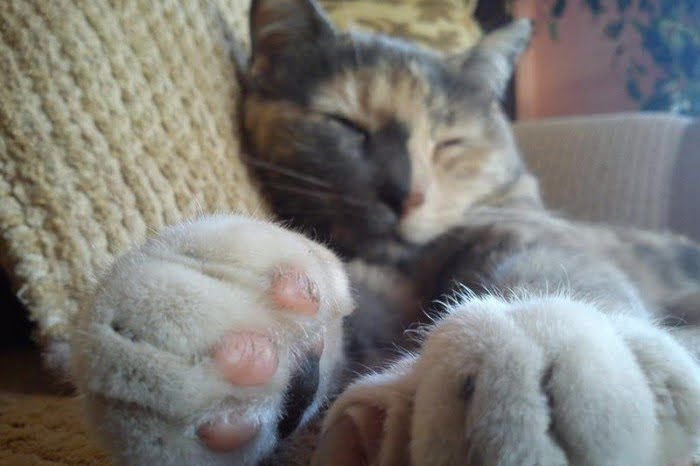
- Cat scratch disease
If you have a mentally healthy and non-aggressive cat, in most cases the claws on the cat’s paws are not much of a threat to humans.
When playing, the claws are hidden, and accidental scratches usually heal quickly.
However, in rare cases the cat scratches can turn into a serious illness – benign lymphoreticulosis (cat scratch disease). Treatment – in the hospital, to consult a doctor necessarily. Symptoms are inflammation of the lymph nodes, fever and general intoxication. Persistent immunity develops after the disease. For prevention, disinfect all accidental scratches on the skin.
- Cats’ paws need care and attention.
Cats need healthy paws to run, climb, fight, scratch and hunt. That’s why it’s important to keep them healthy and strong with regular checkups.
Paws should be free of wounds, cuts and infections.
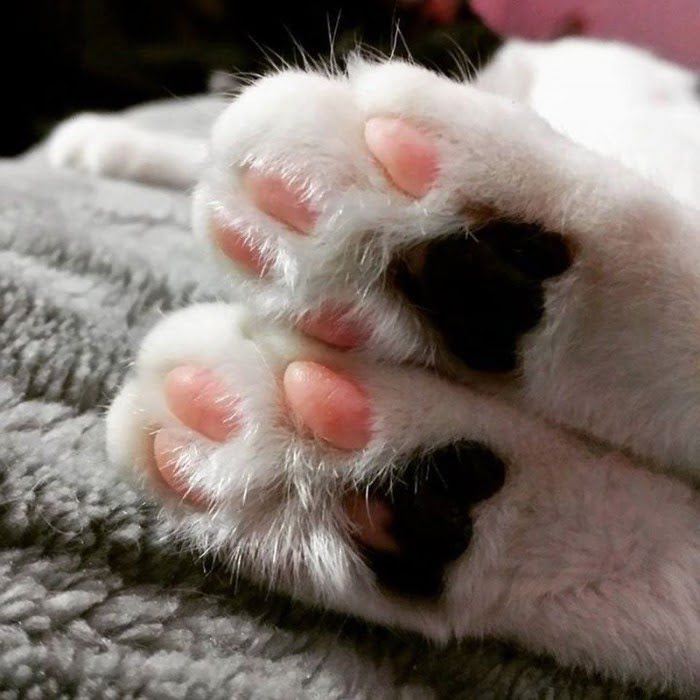
Dirt, litter and household chemicals should be kept away from cats so that they do not hurt their delicate paws. You should regularly check the skin between their paws to make sure there are no sharp particles, dirt, sores or allergies lodged there.
For the same reason, the floors in a home with cats should be cleaned regularly. Cats lick dirt off their paws and can get serious infections brought on their feet from the street.
If you have dogs living in the house, in addition to cats, you need to be especially careful to wash their paws with protective shampoo after every walk.
I try to wipe my cats’ pads once a week with chlorhexidine (0.05%) to protect them from possible infections.
Nails must be trimmed a couple of times a month with special clippers. This should be done very carefully, and preferably in a bright light, so that you can see where the vessel inside the claw lies. Always keep a cotton pad soaked in hydrogen peroxide on hand when trimming claws to stop bleeding if you hit a vessel.




